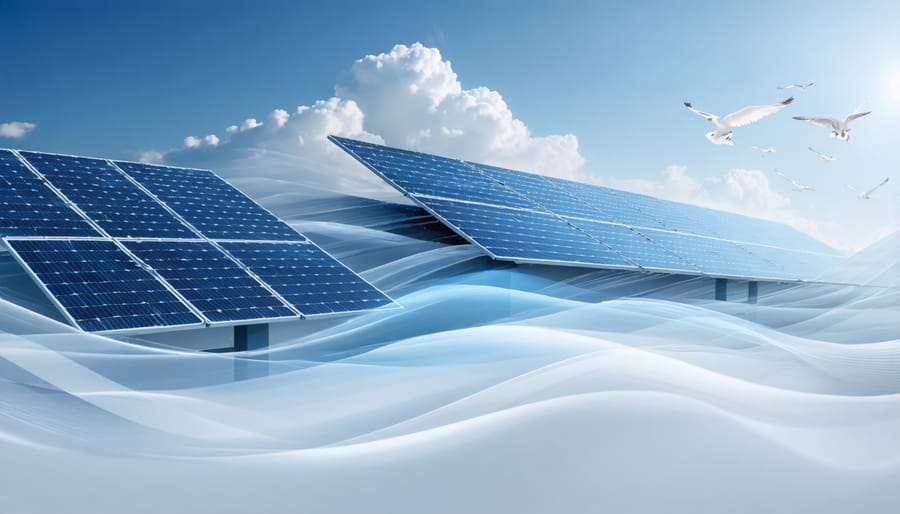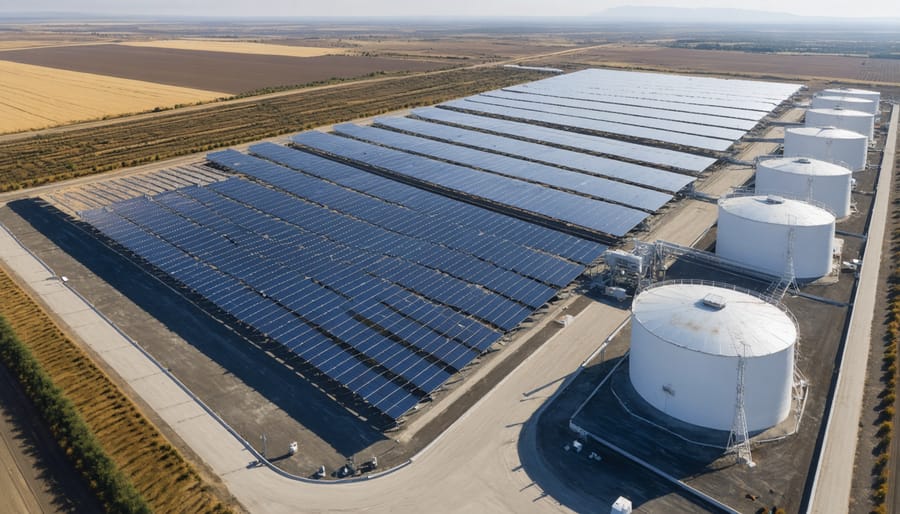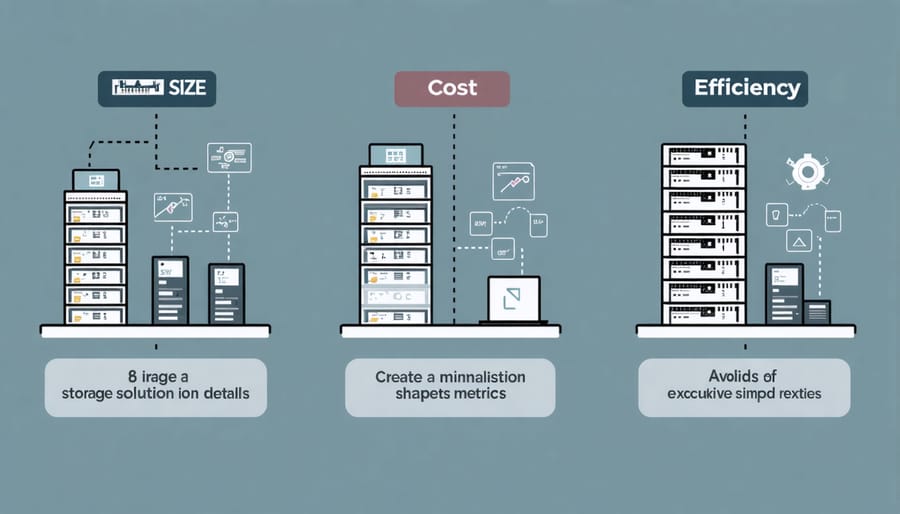Solar Energy Storage Systems That Actually Save You Money

Solar energy storage systems represent the critical bridge between intermittent solar power generation and reliable, round-the-clock energy availability. Modern storage solutions have revolutionized how we approach maximizing solar investment, enabling both households and industries to achieve true energy independence. From cutting-edge lithium-ion batteries to innovative thermal storage systems, today’s market offers diverse solutions tailored to specific energy needs and consumption patterns.
The evolution of storage technologies has transformed solar from a daytime-only power source into a complete energy management system. Whether it’s chemical storage in advanced batteries, mechanical storage through pumped hydro systems, or thermal storage using molten salt technology, each solution presents unique advantages for different applications. These systems not only ensure continuous power supply but also provide critical grid stability, emergency backup, and significant cost savings through strategic energy management.
As European nations accelerate their transition to renewable energy, understanding these storage options becomes essential for making informed decisions about solar installations. The right storage system can mean the difference between partial solar utilization and achieving complete energy autonomy.
Chemical Battery Storage Systems
Lithium-Ion Storage Solutions
Lithium-ion batteries have emerged as the leading storage solution for solar energy systems, thanks to their exceptional performance and versatility. These modern lithium-ion technologies offer an impressive combination of high energy density, long cycle life, and declining costs, making them increasingly attractive for both residential and commercial applications.
The core advantages of lithium-ion storage systems include their compact design, requiring minimal installation space, and their high round-trip efficiency of up to 95%. This means that nearly all stored energy is available for use, maximising the return on investment for solar installations. Additionally, these systems typically last 10-15 years, providing reliable performance throughout their lifespan.
For homeowners, lithium-ion batteries offer seamless integration with existing solar setups and smart home systems. They enable effective load shifting, allowing users to store excess solar energy during peak production hours and use it during evening periods or cloudy days. This capability significantly reduces dependency on grid power and helps stabilise electricity costs.
In the commercial sector, lithium-ion storage solutions excel at demand charge management and grid services. Their rapid response time and high power output make them ideal for maintaining consistent power supply during peak demand periods. European businesses particularly benefit from these systems’ scalability, as they can easily expand their storage capacity as energy needs grow.
While initial investment costs remain higher compared to some alternatives, the long-term benefits of lithium-ion storage – including minimal maintenance requirements, high reliability, and decreasing prices – make them an increasingly cost-effective choice for sustainable energy management.

Flow Batteries
Flow batteries represent an innovative approach to energy storage, offering unique advantages for large-scale solar applications. Unlike traditional batteries, these systems store energy in liquid electrolytes contained in separate tanks, which can be scaled by simply increasing the tank size.
The technology works by pumping these electrolytes through a central reaction chamber, where they generate electricity through electrochemical processes. Common types include vanadium redox flow batteries, which have gained significant traction in European industrial applications due to their reliability and long service life.
One of the most compelling advantages of flow batteries is their ability to decouple power output from storage capacity. This means users can independently adjust the system’s power rating and storage duration, offering unprecedented flexibility for different applications. The technology also boasts an impressive cycle life, often exceeding 20,000 cycles, with minimal degradation over time.
For industrial-scale solar installations, flow batteries excel in providing long-duration storage, typically ranging from 4 to 12 hours. This makes them particularly valuable for facilities requiring consistent power supply throughout non-solar hours. The systems also demonstrate excellent safety characteristics, as the liquid electrolytes are inherently less flammable than solid-state alternatives.
While initial investment costs remain higher than some alternatives, flow batteries offer compelling long-term value through their extended lifespan and minimal maintenance requirements. Several European industrial parks and renewable energy facilities have successfully implemented flow battery systems, demonstrating their practical viability for large-scale solar energy storage.
Modern flow battery installations can achieve round-trip efficiencies of 70-80%, making them increasingly attractive for commercial and industrial applications where long-duration storage is essential.
Thermal Energy Storage
Molten Salt Storage
Molten salt storage represents one of the most efficient and proven technologies for large-scale solar energy storage, particularly in industrial applications. This innovative system uses specially formulated salt mixtures, typically composed of sodium and potassium nitrates, which are heated to temperatures exceeding 500°C using surplus solar energy during peak production hours.
The remarkable thermal properties of these salt mixtures allow them to maintain high temperatures for extended periods, making them ideal for storing large amounts of thermal energy. When electricity is needed, the stored heat is used to generate steam, which drives conventional turbines to produce power, ensuring a steady supply even after sunset or during cloudy periods.
Several successful implementations across Europe demonstrate the technology’s reliability. The Gemasolar plant in Spain, for instance, achieves up to 15 hours of energy storage, enabling round-the-clock power generation. This capability has made molten salt storage particularly attractive for industrial-scale solar thermal power plants and energy-intensive manufacturing processes.
The system’s advantages include its high energy density, relatively low cost per kilowatt-hour stored, and minimal environmental impact, as the salts used are non-toxic and can be recycled. While primarily suited for large-scale applications, ongoing innovations are making this technology increasingly relevant for smaller industrial operations seeking sustainable energy storage solutions.

Water-Based Thermal Storage
Water-based thermal storage systems represent one of the most efficient and cost-effective solutions for harnessing solar energy, particularly in European climates. These systems use water’s excellent heat-retention properties to store thermal energy collected during sunny periods for later use.
In residential applications, solar thermal collectors heat water stored in insulated tanks, typically ranging from 200 to 500 litres. This stored hot water can maintain temperatures between 60°C and 80°C for extended periods, providing reliable domestic hot water and supporting space heating requirements throughout the day and night.
Commercial installations often employ larger-scale solutions, with storage capacities reaching several thousand litres. These systems frequently integrate with existing heating infrastructure, offering substantial energy savings for businesses such as hotels, sports facilities, and industrial processes requiring consistent hot water supply.
Modern water-based storage systems feature advanced stratification technology, which maximises efficiency by maintaining different temperature layers within the tank. This innovation ensures optimal heat distribution and reduces energy losses. Additionally, many systems now incorporate smart controls that optimise charging and discharging cycles based on weather forecasts and consumption patterns.
The durability of water-based thermal storage systems, combined with their relatively simple maintenance requirements, makes them particularly attractive for long-term sustainability planning. With proper insulation, these systems can retain heat for several days, providing reliable energy security during periods of limited solar availability.
Mechanical Energy Storage
Pumped Hydro Storage
Pumped hydro storage represents one of the most established and largest-scale energy storage solutions available in Europe. This system works by using excess solar energy to pump water from a lower reservoir to a higher one during peak generation periods. When energy is needed, the water flows back down through turbines, generating electricity much like a conventional hydroelectric power plant.
The technology boasts impressive efficiency rates of 70-85%, making it particularly attractive for large-scale applications. Several European countries, including Switzerland, Norway, and Austria, have successfully integrated pumped hydro storage into their renewable energy networks, demonstrating its reliability and effectiveness.
While traditionally associated with utility-scale operations, innovative mini-pumped hydro storage solutions are emerging for industrial applications. These systems can be implemented in locations with suitable topography and water availability, such as hilly regions with existing water resources or industrial facilities with significant height differences.
The main advantages of pumped hydro storage include its long operational lifetime (40-60 years), minimal environmental impact when using existing water bodies, and the ability to provide large-scale storage capacity. However, implementation requires careful consideration of geographical constraints and environmental factors.
For businesses and industries located in suitable areas, pumped hydro storage can offer a sustainable solution for managing large-scale solar energy storage needs, particularly when combined with other storage technologies in a comprehensive energy management strategy.
Compressed Air Energy Storage
Compressed Air Energy Storage (CAES) represents an innovative approach to storing solar energy by converting excess electricity into compressed air. This technology utilizes surplus solar power to compress air into underground caverns, abandoned mines, or specially designed storage tanks. When energy is needed, the compressed air is released through turbines to generate electricity, making it an effective solution for large-scale energy storage needs.
Modern compressed air storage solutions have achieved impressive efficiency rates, particularly when combined with thermal storage systems that capture and reuse the heat generated during compression. This integration significantly improves the overall system performance and energy recovery rates.
In Europe, several pilot projects have demonstrated the viability of CAES technology for industrial applications and grid-scale storage. The technology proves particularly valuable in regions with suitable geological formations for underground storage, offering storage capacities ranging from several hours to multiple days of energy supply.
While traditionally associated with utility-scale applications, recent innovations have made smaller-scale CAES systems increasingly accessible for commercial and industrial users. These systems excel in providing long-duration storage capabilities with minimal environmental impact and a longer operational lifespan compared to many alternative storage technologies.
The main advantages include low maintenance requirements, no hazardous materials, and the ability to provide both short-term and long-term storage solutions. However, considerations such as space requirements and initial installation costs should be carefully evaluated when planning a CAES installation.

Choosing the Right Storage Solution
Selecting the right solar energy storage solution requires careful consideration of several key factors that align with your specific needs and circumstances. Start by assessing your daily energy consumption patterns and peak usage times to determine the required storage capacity. For residential installations, most European households typically need between 5-15 kWh of storage capacity to achieve optimal energy independence.
Consider your available space and installation location, as different storage technologies have varying spatial requirements. Battery systems are generally more compact and suitable for indoor installation, while thermal storage might require dedicated outdoor space. Climate conditions at your location also play a crucial role – some battery technologies perform better in moderate temperatures, while others are more resilient to extreme conditions.
Budget considerations should include not just the initial investment but also the total cost of ownership. While lithium-ion batteries might have higher upfront costs, their longer lifespan and higher efficiency often result in better long-term value. For businesses, scalability is particularly important – modular systems allow for capacity expansion as energy needs grow.
Safety requirements and local regulations vary across European regions, so ensure your chosen solution complies with relevant standards and building codes. Some municipalities offer incentives for specific storage technologies, which could influence your decision-making process.
The system’s compatibility with your existing or planned solar installation is crucial. Modern storage solutions should integrate seamlessly with smart energy management systems, allowing for optimal energy flow control and monitoring. Consider also the manufacturer’s track record, warranty terms, and local support availability.
For larger installations, particularly in industrial settings, hybrid solutions combining different storage technologies might provide the most efficient solution. This approach allows you to leverage the benefits of multiple storage types while addressing specific operational requirements.
Remember that the most suitable storage solution today should also accommodate your future needs, including potential electric vehicle charging or home automation system integration.
Solar energy storage systems have become increasingly vital in Europe’s transition towards sustainable energy independence. From traditional battery systems to innovative thermal storage solutions, each technology offers unique advantages for different applications. The growing maturity of lithium-ion batteries, combined with emerging technologies like flow batteries and hydrogen storage, provides diverse options for both residential and commercial users.
As we look to the future, several trends are shaping the evolution of solar storage. The continuous decrease in battery costs, improved energy density, and longer lifecycle spans are making storage solutions more accessible and economically viable. The integration of smart energy management systems is enhancing storage efficiency and optimizing energy consumption patterns across Europe.
The outlook for solar storage remains exceptionally promising. Technological innovations, coupled with supportive EU policies and increasing environmental awareness, are driving rapid advancement in storage solutions. We can expect to see further developments in hybrid systems, enhanced grid integration capabilities, and more sustainable storage materials.
For European homeowners and businesses considering solar storage, the key is to carefully evaluate specific needs, available space, budget constraints, and local regulations. With proper planning and professional guidance, implementing an effective solar storage system can significantly enhance energy independence while contributing to Europe’s renewable energy goals. As the technology continues to evolve, solar storage systems will play an increasingly crucial role in our sustainable energy future.
Leave a Reply